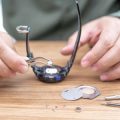Introduction to British Beauty on a Budget
The British beauty scene is renowned for its dynamic mix of luxurious brands and accessible high street favourites. Over the years, beauty aisles across the UK have become filled with innovative products that promise glowing skin and effortless charm. However, as living costs rise and consumers become more conscious about their spending, many British shoppers are turning towards affordable alternatives without compromising their skin’s health or radiance. This shift sees an increasing interest in homemade, DIY beauty solutions that blend tradition with modern skincare needs. From kitchen cupboards to bathroom counters, resourceful individuals are crafting their own balms, masks, and cleansers—often inspired by beloved high street staples but tailored to personal preferences and sensitive skin types. The appeal? More control over ingredients, less strain on the wallet, and a renewed focus on gentle nourishment and holistic well-being. As we delve deeper into this movement, discover how the UK’s beauty lovers are redefining self-care—one homemade remedy at a time.
The Allure of British Beauty Brands
British beauty has long held a special place in the hearts and routines of locals, with high street staples and cult favourites forming the backbone of daily self-care. The unique appeal of these brands lies not only in their time-tested formulas, but also in their accessibility and resonance with the British lifestyle. From Boots to Superdrug, shoppers are spoilt for choice when it comes to iconic products that promise gentle care, trusted results, and great value.
High Street Heroes: What Makes Them Special?
These well-loved British brands are celebrated for their focus on skin health, gentle ingredients, and fuss-free application—qualities that align perfectly with the UK’s preference for understated beauty. Below is a quick comparison of classic high street names that have won loyal followings:
| Brand | Hero Product | Why Locals Love It |
|---|---|---|
| No7 (Boots) | Protect & Perfect Serum | Clinically proven anti-ageing, affordable luxury, often featured in local beauty columns |
| Simple | Kind to Skin Micellar Water | Mild formulas free from harsh chemicals, perfect for sensitive British skin |
| Soap & Glory | Clean On Me Shower Gel | Fun packaging, signature scents, playful take on pampering routines |
| Sleek MakeUP | i-Divine Eyeshadow Palette | Pigment-rich colours at a wallet-friendly price point, inclusive shade ranges |
| The Body Shop | Vitamin E Moisture Cream | Cruelty-free ethics, reliable hydration through unpredictable British weather |
The Role of Boots and Superdrug in Everyday Routines
A trip to Boots or Superdrug is almost a rite of passage in the UK. These retailers aren’t just shops—they’re community fixtures where generations have discovered their first skincare routine or favourite lipstick. Their shelves are lined with affordable finds as well as innovative launches from homegrown brands. This blend of nostalgia and modernity is what keeps Brits coming back for more.
A Culture Rooted in Trust and Accessibility
For many locals, the trust placed in these brands is generational—mothers recommending their favourite creams to daughters, friends swapping tips about new serums over tea. The allure isn’t just about trends; it’s about care, consistency, and confidence in every bottle or tube found on the high street.

3. DIY Beauty: Homemade Remedies Inspired by the UK
Embracing a gentle, restorative approach to skincare doesn’t have to mean spending a fortune on high street brands. The British countryside offers an abundance of time-honoured ingredients that can be transformed into soothing, affordable remedies right at home. By drawing inspiration from classic UK botanicals, you can create effective and luxurious treatments that nourish your skin with nature’s finest.
English Rosewater Toner
Renowned for its delicate fragrance and calming properties, English rosewater is a staple in traditional British beauty routines. To make your own toner, simply steep fresh or dried rose petals in distilled water, then strain and bottle the liquid. This gentle toner helps balance the skin’s pH while providing light hydration and reducing redness—ideal for sensitive or stressed complexions.
Oat Baths for Comforting Relief
The humble oat has been used for centuries across the UK for its soothing and restorative benefits. For a calming bath soak, grind plain porridge oats into a fine powder and add them to warm bathwater. Oats help relieve irritation and dryness while leaving the skin feeling soft and replenished—a perfect remedy after a brisk walk through the British countryside.
Herbal Teas as Skin Soothers
Brits are known for their love of herbal teas, but these infusions can offer more than just comfort in a cup. Chamomile tea bags, once cooled, can be placed over tired eyes to reduce puffiness, while a strong brew of green tea can be spritzed onto clean skin as an antioxidant-rich facial mist. These simple rituals tap into the restorative traditions of British wellness culture, delivering gentle care without harsh additives.
Why Choose Homemade?
By crafting your own DIY skincare using familiar British ingredients, you not only save money but also ensure your routine is free from unnecessary chemicals. Each recipe celebrates the understated elegance of local botanicals—offering a sustainable path to healthy, radiant skin inspired by Britain’s natural heritage.
4. Affordable Ingredients from the Local Shop
One of the best parts about transitioning from high street beauty brands to homemade alternatives is discovering just how many effective ingredients are available right on your doorstep. British supermarkets and high street shops offer a treasure trove of wallet-friendly products that can easily be incorporated into your daily skincare routine. Not only does this make DIY beauty more accessible, but it also helps you embrace a more sustainable and personalised approach to self-care.
Everyday Essentials for DIY Beauty
You don’t need to visit specialist stores or order obscure items online—many affordable and versatile beauty ingredients can be picked up during your usual shop at Tesco, Sainsbury’s, Boots or even your local corner shop. Below is a handy table of common household items that work wonders for your skin and hair:
| Ingredient | Where to Find | Main Beauty Benefits |
|---|---|---|
| Porridge Oats | Supermarkets (Cereal Aisle) | Soothes sensitive skin, gentle exfoliation, calming face masks |
| Coconut Oil | High Street Shops/Supermarkets (Cooking Oil Section) | Deep moisturiser for skin and hair, makeup remover |
| Honey | Supermarkets (Baking or Condiments) | Natural antibacterial, hydrates and soothes skin, brightening masks |
| Bicarbonate of Soda (Baking Soda) | Supermarkets (Baking Aisle) | Exfoliant, deep cleansing masks, clarifying scalp treatments |
| Aloe Vera Gel | Boots/Superdrug/Health Food Stores | Calms irritation, hydrates, perfect for after-sun care |
| Apple Cider Vinegar | Supermarkets (Vinegars/Condiments) | Tones skin, balances pH, clarifies scalp and hair rinse |
| Tea Bags (Green/Black) | Supermarkets (Tea Aisle) | Reduces puffiness, soothes tired eyes, antioxidant-rich toners |
Sourcing Tips for Effective DIY Beauty
- Look for Unrefined & Organic Options: When possible, opt for organic or unrefined versions—especially for oils and honey—to ensure maximum benefits and minimal additives.
- Bulk Buy for Savings: Many ingredients like oats and coconut oil are cheaper in larger quantities. Share with friends or store safely at home to save over time.
- Check Own-Brand Labels: Supermarket own-brand products often offer the same quality as branded versions at a fraction of the price.
- Seasonal Produce: Make the most of fresh fruits or vegetables that are in season locally; cucumber, strawberries and avocados are fantastic additions to masks and scrubs.
Your Local Beauty Haven Awaits!
The next time you stroll down your local high street or pop into your neighbourhood shop, keep an eye out for these beauty staples. With just a few simple items from familiar British retailers, you can craft nourishing treatments tailored to your unique needs—all without breaking the bank.
5. Safe Skincare: Tips for Gentle Home Formulations
When venturing into homemade skincare, especially as an alternative to high street British beauty brands, safety and gentleness should always be your top priorities. While the idea of crafting your own face masks or cleansers in your kitchen is empowering, it’s essential to approach DIY skincare with mindfulness and a touch of British caution. Here are some best practices to help you create soothing and restorative formulations using everyday ingredients found in UK households.
Choose Mild, Restorative Ingredients
Start by selecting ingredients known for their gentle properties. Classic British staples such as oats, honey, cucumber, and chamomile tea are celebrated for their skin-soothing benefits. Oats can be blended into a calming mask, while honey offers natural antibacterial and humectant properties—perfect for hydration without irritation. Always opt for unprocessed, organic versions where possible for the purest results.
Mixing with Care
Use clean utensils and bowls to avoid introducing bacteria into your formulations. Measure ingredients carefully—less is often more when it comes to sensitive skin. If you’re adding essential oils (like lavender or tea tree), limit them to a drop or two per batch, as high concentrations can cause irritation. Stir gently until your mixture achieves a smooth consistency; this ensures even distribution of active components for reliable results.
Always Patch Test First
No matter how natural your blend, patch testing is a must—a golden rule echoed by British dermatologists and beauty experts alike. Apply a small amount of your mixture to the inside of your wrist or behind your ear and wait at least 24 hours. If you notice redness, itching, or any discomfort, avoid using that formulation on your face. This practice helps safeguard against unexpected reactions and keeps your routine skin-friendly.
Storage and Usage Guidelines
Homemade skincare products lack preservatives found in shop-bought brands, so make only what you’ll use within a few days. Store mixtures in clean glass jars in the fridge to keep them fresh. Avoid dipping fingers directly into containers; instead, use a clean spoon to maintain hygiene. If you detect any changes in smell or appearance, discard the product straight away.
Cultivating Consistency with Care
The journey from high street shelves to homemade skincare can be deeply rewarding when approached thoughtfully. By prioritising gentle care and safety—through careful ingredient selection, precise mixing, diligent patch testing, and proper storage—you can enjoy restorative rituals at home that echo the best of British beauty traditions.
6. Comparing Results: High Street Brands Versus Homemade
When it comes to nurturing your skin, both high street beauty brands and homemade alternatives have their unique advantages and limitations. British high street favourites—whether it’s Boots’ own ranges or heritage icons like Simple and No7—offer convenience, consistency, and clinically tested formulas. These products are often formulated with advanced ingredients that promise reliable results, making them a go-to for those who value efficiency in their daily routines.
On the other hand, homemade skincare solutions invite us to slow down and engage with the ritual of self-care. Using ingredients from your local market—think oats, honey, or even a splash of Yorkshire tea—offers full control over what you apply to your skin. This approach can be gentler, especially for sensitive complexions, and allows you to avoid certain additives or fragrances common in commercial products. However, DIY recipes may lack the shelf life, stability, and targeted actives found in store-bought formulas.
Reflecting on both options invites a mindful assessment of your personal needs. If you’re seeking immediate results or targeted treatments—such as anti-ageing serums or SPF protection—the expertise of high street brands can be reassuring. Conversely, if your focus is on nourishing rituals that reconnect you with simple pleasures and natural ingredients, homemade remedies offer a comforting alternative.
Ultimately, the best approach may be a balanced blend: enjoying the reliability of trusted British brands while also indulging in bespoke DIY treats when time allows. By listening to your skin and embracing mindful routines, you can craft a regimen that brings out your natural glow—whether that’s from the chemist’s shelf or your own kitchen counter.
7. Conclusion: Empowering Your British Beauty Ritual
Blending the best of British beauty traditions with smart, affordable DIY alternatives is more than just a trend—it’s a celebration of self-care and resourcefulness that every Brit can embrace. By exploring the full spectrum from high street favourites to homemade creations, you’re not only saving pennies but also crafting a beauty ritual that’s uniquely yours. Whether you’re whipping up a soothing oat mask inspired by countryside remedies or adding a touch of London chic with a dash of homemade rosewater, remember that confidence grows through daily self-care, not price tags. So go ahead—mix and match, experiment and enjoy the journey. With a little creativity and a nod to our rich heritage, at-home beauty can be both luxurious and accessible. Here’s to glowing skin, renewed confidence, and the empowering pleasure of looking after yourself the British way.


